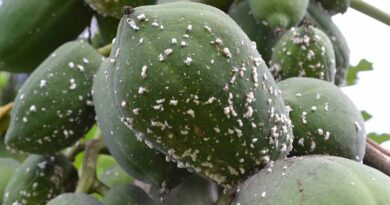Patanjali Fluorescence
08 April 2024, New Delhi: Patanjali Fluorescence
- It has been developed through the bacteria Pseudomonas fluorescens, found naturally in the soil.
- Process of protecting crops from disease by pseudomonas fluorescens.
- Pseudomonas controls disease-causing agents, bacteria and fungi through the secretion of carbonic acids like siderophore and antibiotics.
- It works as a micro-bacteria systemic bio-control agent by entering into the internal working system of the plants.
- Pseudomonas competes with the rhizosphere of the plants and checks the spreading of disease-causing agents.
- It makes available nutrients to the plants through the secretion of pseudomonas gibberellin hormones and carbonic acid.
- It also boosts the immune system of the plants and secretes (2-4 DA PG) which is useful to control diseases.
- 2-4 diacetyl fraloro glusanol (2—4 DA PG).
- It proves effective in controlling diseases like root rot, stem rotting, collar rot, searing, spot on leaves and mildew. It can also be used as a nursery treatment, soil treatment, seed treatment, bulb, stem and plant treatment.
Also Read: UPL receives ‘Well-Known Trademark’ by the Indian Trademark Registry
(For Latest Agriculture News & Updates, follow Krishak Jagat on Google News)










